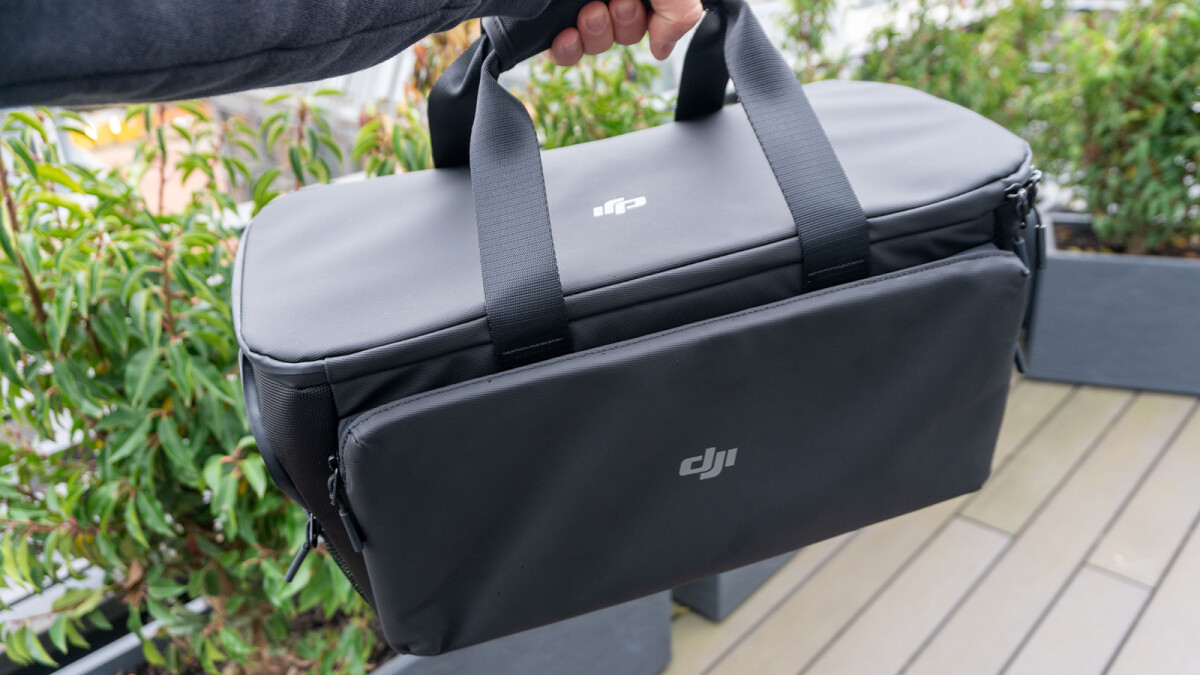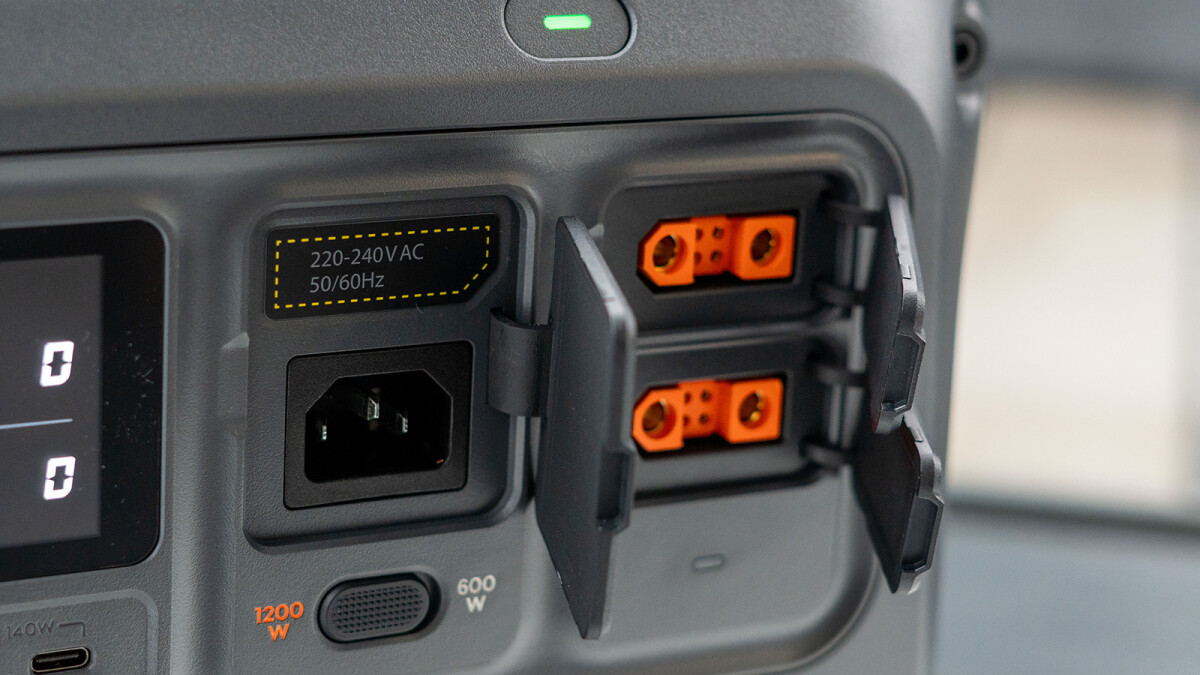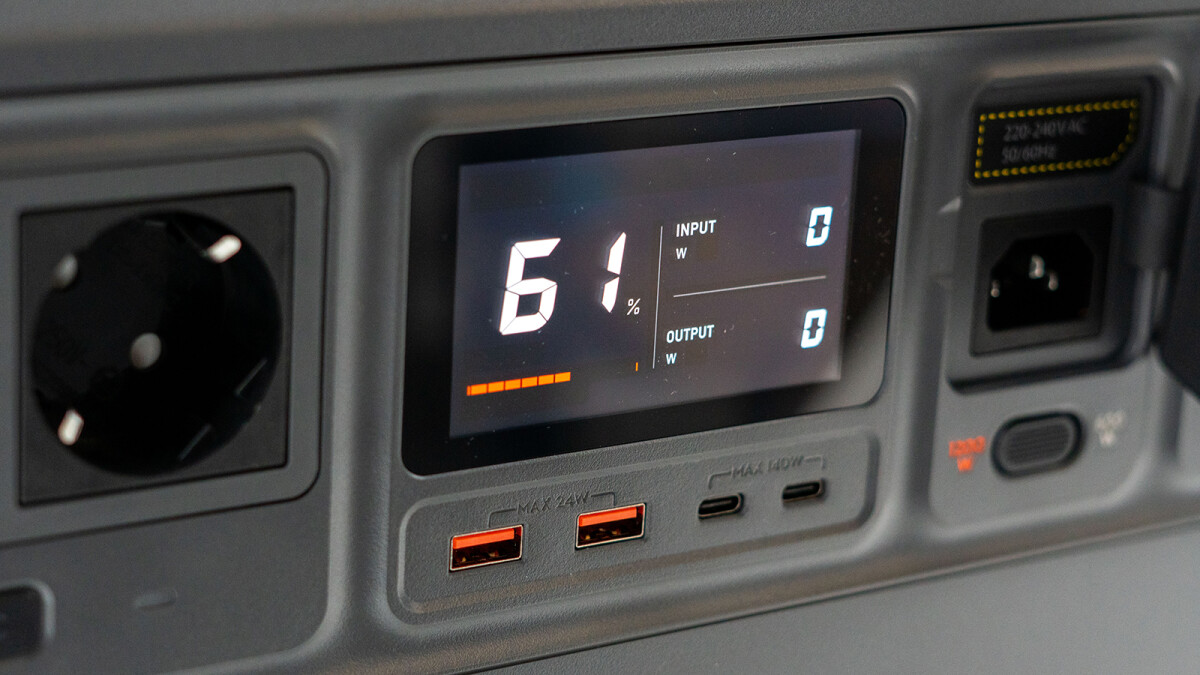DJI no longer only builds drones, but also power stations. Our test explains why the Power 1000 is particularly interesting for drone fans.
The DJI Power 1000 can charge all kinds of gadgets and also provides enough power for smaller household appliances.
The manufacturer DJI, known for its drones, is expanding its product portfolio. In addition to camera drones, film and action cameras and gimbals, the company now also offers power stations. At launch there will be two models available for purchase in the DJI Store: the DJI Power 1000 (999 euros) and the DJI Power 500 (529 euros).
Priced in the middle range
Purposes and operation
Display and operation
Charge Power 1000
Netzwelt means
We liked that
We didn’t like that
Both differ primarily in capacity and performance. The Power 1000 offers a capacity of 1,024 watt hours (Wh) and a maximum output power of 2,200 watts, the Power 500 has 512 Wh and a maximum output power of 1,000 watts. Due to the lower capacity, the 500 model is of course also lighter. It weighs around 7.3 kilograms. The Power 1000 weighs almost twice as much.
DJI provided us with the larger Power 1000 model for our test. It competes with the well-known Jackery Explorer 1000 power station and products such as the Anker Solix F1200 (PowerHouse 757) or the EcoFlow DELTA 2.
Priced in the middle range
Compared to this, the DJI power station is in the middle range in terms of price. While Jackery is asking 1,249 euros for the Explorer 1000 and Anker only wants 799 euros for the Solix F1200, DJI, like EcoFlow, is asking 999 euros for its power station.
At DJI Buy Power 1000*
Advertisement
The DJI Powerstation is in the middle of the pack not only in terms of price, but also in terms of weight. At 13 kilograms, it is neither particularly heavy nor particularly light. However, it can easily be carried by one person to the place of use. DJI has installed two handles on the sides for this purpose.
Purposes and operation
Alternatively, the manufacturer also offers you a carrying bag as an accessory that is available separately. It was included with our test device and left a solid impression. However, we are missing a carrying strap here. The power station does not offer wheels. If you want to roll them to the place of use, you have to use a hand truck or a roller board. Speaking of the location. What is the DJI Powerstation suitable for?

The DJI Power 1000’s optional carrying case lacks a shoulder strap.
The manufacturer itself offers it as a portable giant battery that you can use to charge your DJI drones and gadgets on the go. It even offers two special SDC ports through which you can charge selected drones (Mavic 3 series, Air 3, Inspire 3, Matrice 30 series) from the manufacturer particularly quickly. According to DJI, 30 minutes should be enough to take off again. However, a special charging cable is required for this, which is NOT included in the scope of delivery.
Of course, with the DJI Power 1000 you can not only charge drones, but also other devices on the go. The power station offers two Schuko sockets, two USB A and two USB C ports. The USB C ports support charging with up to 140 watts and are therefore also suitable for charging a laptop. So you can connect numerous devices. However, due to the limited output power, not everything can be operated on the power station. However, cell phones, tablets, smartwatches and household appliances such as microwaves or kettles are not a problem.

Numerous DJI drones can be charged particularly quickly via the SDC connections.
In the test, we charged two cell phones and a tablet at the same time and boiled a pot of water at the same time. However, supplying power to certain tools can be difficult. Also note: Household appliances can quickly drain the Power 1000. In the test, it was enough to boil six pots of water (2,000 watts) to “get the battery down”. A microwave, on the other hand, runs significantly longer at 600 watts, around 1.3 hours. DJI specifies around 12 charges for drones, and you can charge smartphones up to 57 times on the Power 1000.
The manufacturer does not plan to combine several Power 1000s into one large battery – here you have to use the EcoFlow Delta 2. This makes it clear: the DJI power station is not an emergency power generator to bridge long power outages at home. At best, you can make do with this in the short term.
Display and operation
By the way, all connections are not illuminated. The nearby display is bright enough so that you can not only read it well on sunny days, but also quickly place the plug correctly in the power station in the dark. On the display you can see what percentage of the battery capacity is still available to you. You can also see the current input and output power and an estimate of how long the capacity will last in the current situation.

The remaining charge and the current input and output power can be easily read on the display of the DJI Power 1000.
There is no app for the power station, but it is also unnecessary. The DJI Power 1000 doesn’t offer many options. You can only deactivate the two Schuko sockets using a button if you are not using them. In our opinion, you should too, because in the test they sometimes made a quiet but unpleasant beeping noise when idling. You can also speed up the charging process using a toggle switch.
Charge Power 1000
Then the Power 1000 only charges to 80 percent. According to DJI, it takes 50 minutes for this, and the manufacturer states 70 minutes for a full charge. In the test, however, charging from the socket took significantly longer – at least when the power station was completely empty. Here we needed over two hours in the test. You can also charge the Power 1000 using a solar panel while on the move, but this must be purchased separately from DJI for 299 euros.
Another positive thing was that the DJI Power 1000 works largely silently. You can hardly hear it when charging; the fan is only noticeably audible under high load, for example when the kettle starts.
Netzwelt means
The DJI Power 1000 is a solid power station. Due to the SDC connections, the purchase is particularly worthwhile for owners of a compatible DJI drone. If you just want to charge your cell phone, laptop, etc., you will find cheaper models (Anker) or models with additional features (EcoFlow) from the competition.
We liked that
- works quietly
- special quick charging ports for DJI drones
We didn’t like that
- Schuko sockets make an unpleasant beeping noise
- no shoulder strap for carrying bag
- ” Tip: The best VPN providers for more security and data protection
- » Buy balcony power plant: Comparison of the best solar systems
Don’t miss anything with this NETWORK WORLDNewsletter
Every Friday: The most informative and entertaining summary from the world of technology!
